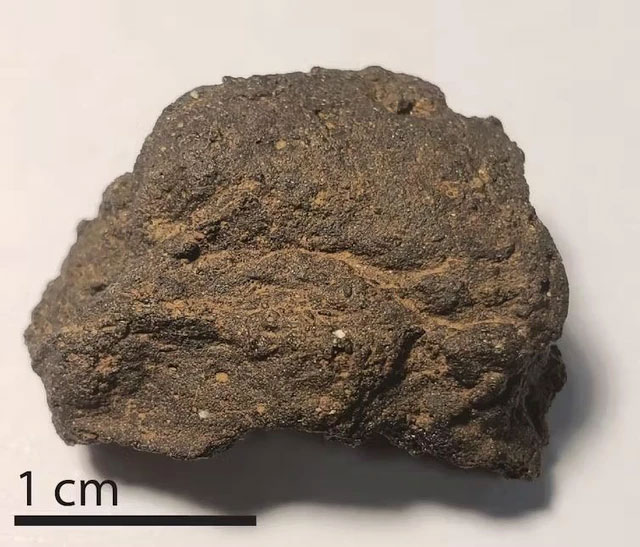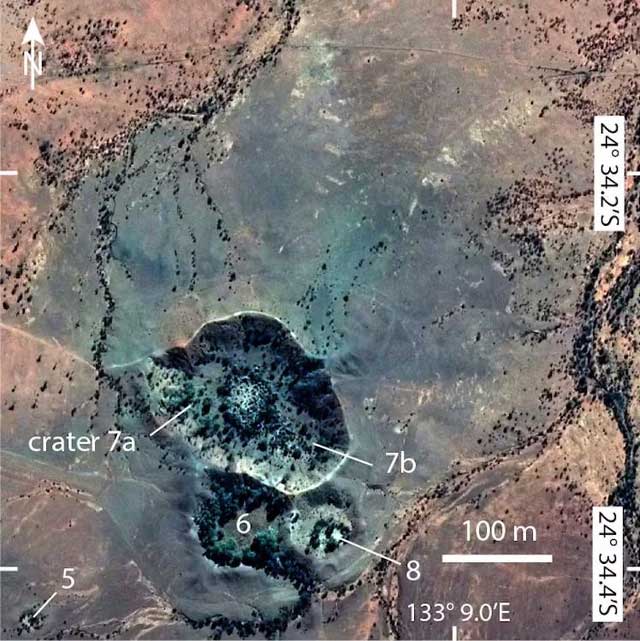The core of a shattered planet fell on Australia?
An unusual type of glass found in Australia has been found to contain up to 10% alien material .
Writing in The Conversation, Dr. Aaron Cavosie, a geologist, geochemist and planetary scientist from Curtin University (Australia) said they have collected special pieces of glass that may contain part of the core of the planet. a broken world.

A piece of meteorite glass found in Australia with 10% alien material - (Photo: Geochimica et Cosmochimica Acta).
Dr. Cavosie and his colleagues analyzed glass fragments from the Henbury Crater area in Australia, a system of impact craters.
This area has 13 primary and secondary craters, formed during an attack from outer space about 5,000 years ago.
The meteorite fragments recovered from the site are iron-IIIAB type , which are remnants of a metal core from an ancient, shattered world.
That world could be a planet, a protoplanet, a failed planet floating in their star system like an asteroid.

Henbury Crater is made up of many primary and secondary craters of different sizes - (Photo: Geochimica et Cosmochimica Acta)
More interestingly, the violent impact of the meteorite from that other world's core helped cosmic material mix with Earthly material. The heat, pressure and other intense elements from the incident also helped create things never before seen.
Scientists used lasers to shoot holes into pieces of Henbury glass , heated them into hot plasma and then studied them with a mass spectrometer.
Results published in the scientific journal Geochimica et Cosmochimica Acta show that the glass is composed of local sandstone, as well as unusually high levels of iron, nickel and cobalt.
Those iron, nickel and cobalt are things inherited from the mysterious world core mentioned above.
It also has high levels of chromium, irdium and other platinum group elements, which are extremely rare in most rocks on the Earth's surface. It is another testament to the cosmic origin of these pieces of glass.
Calculations show that 10% of this glass is from molten alien objects.
10% may not seem like much, but it is a huge treasure for scientists to study. That's already a very high percentage of what comes out of impacts.
By comparison, alien material makes up only about 0.1% of similar debris from the Chicxulub asteroid impact that killed the dinosaurs.
The abundant alien material in this special type of Australian glass promises to help scientists understand how a world's core works and operates.
We cannot directly access the Earth's core, but similar findings will help us understand more about it, because objects in the universe often form according to certain processes.
- The 9th planet has ice-covered iron core
- Jupiter - The largest planet in the solar system is melting
- New hypothesis about the behavior of the Earth's core
- Discover one more layer of the earth's core
- The planet shattered, dropping strange materials into Australia
- Decipher the mystery of the Earth's inner core
- Can the planet exist between the Milky Way core?
- The Earth core pushes from the North to 60 km per year
- Find out the last ingredient that makes up the Earth core
- Australia: a battle of
- Discovered that 9 'super-Earths' can support life
- Giant iceberg shattered
 Van Allen's belt and evidence that the Apollo 11 mission to the Moon was myth
Van Allen's belt and evidence that the Apollo 11 mission to the Moon was myth The levels of civilization in the universe (Kardashev scale)
The levels of civilization in the universe (Kardashev scale) Today Mars, the sun and the Earth are aligned
Today Mars, the sun and the Earth are aligned The Amazon owner announced a secret plan to build a space base for thousands of people
The Amazon owner announced a secret plan to build a space base for thousands of people